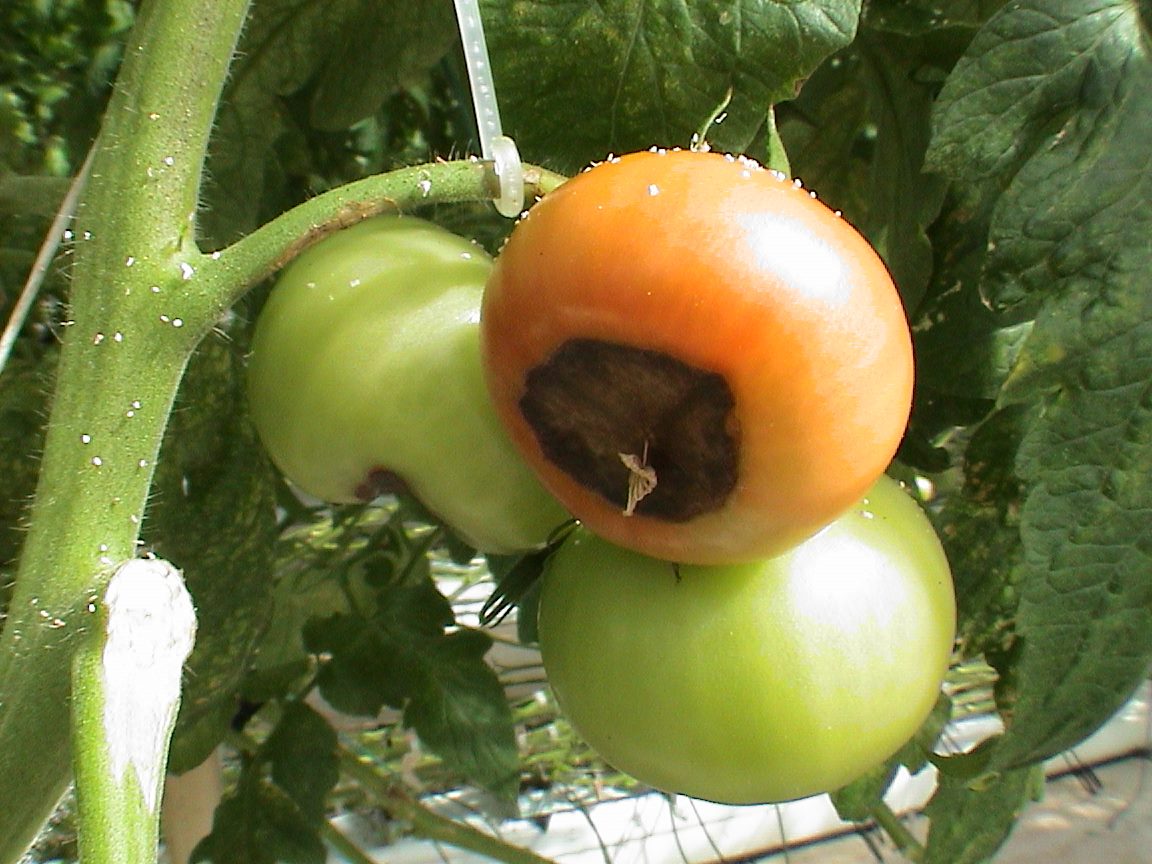 Blossom End Rot
Blossom End Rot
With warm-season vegetables in peak production this time of year, inquiries about blossom end rot have been abundant. Prevalent in tomatoes but also found in peppers, squash, cucumber, eggplant, and watermelon, this physiological disorder is purely the result of a calcium deficiency within the plant itself. However, the causes of the deficiency can differ, making their treatments vary.
The first, most apparent cause is a simple lack of calcium in the soil. Though this is rare in our area due to abundant limestone, the amendment comes as fertilizer to be applied following label instructions. However, it should not be assumed that your soil lacks calcium. More likely, the plants themselves are lacking calcium uptake due to a high soil pH. In this instance, nutrients may be abundant in the soil, but they are essentially locked in place and unabsorbable because of the soil's alkalinity. Lowering this pH with a sulfur fertilizer, the nutrients become unlocked. A pH close to 6.5 is recommended for vegetable gardens for calcium uptake. A soil test can relay that information, and the amendments necessary can be communicated to you through a soil test analysis with your local Extension office.
A lack of calcium uptake, ultimately leading to blossom end rot, can also be caused by sharp changes in outdoor temperatures, extreme fluctuations in soil moisture, drought, root damage, waterlogged roots, and too much growth from overfertilization with nitrogen. The list is varied and extensive. However, noting your gardening practices and the environmental conditions your garden faces can be helpful as you work backward to address the problem.
A mulched garden bed will assist with soil moisture and temperature issues. The more consistently you can keep these soil factors, the better your plants will be. Remember, it is also best to somewhat mimic rainfall patterns to wean plants off excessive moisture through successive watering efforts. If an abundance of rainfall has fallen, followed by extended drought, this fluctuation will likely cause blossom end rot. This can be mitigated by not withholding irrigation events after rainfall but slowly decreasing the amount of subsequent water applied. Essentially, it slows down the drying-out process. Of course, this practice should still be done with water conservation practices in mind, aiming for non-oversaturated soil.
If fertilizing, opt to utilize a calcium nitrate fertilizer over ones that release nitrogen in the form of ammonium, as excess ammonium ions in a soil profile can result in reduced calcium uptake. Also, do your best to avoid overfertilization to avoid plant growth that is too rapid. This is especially important as fruits are small, and the rapid growth will likely show up as blossom end rot, cracking, or facing.
Remember, too, that there is only so much we can do to prevent blossom end rot. If weather conditions are not in our favor, it will likely appear. Remove those fruits and allow your plants to push their nutrients toward trying again.
Anthony Reardon, Horticulture Small Farms Agent, 2023
Return to Vegetables Agent Articles
Have questions?
The Garden Hotline is staffed by trained EMG volunteers and Extension staff who will assist you with questions.
Phone: (913) 715-7050
Email: garden.help@jocogov.org
